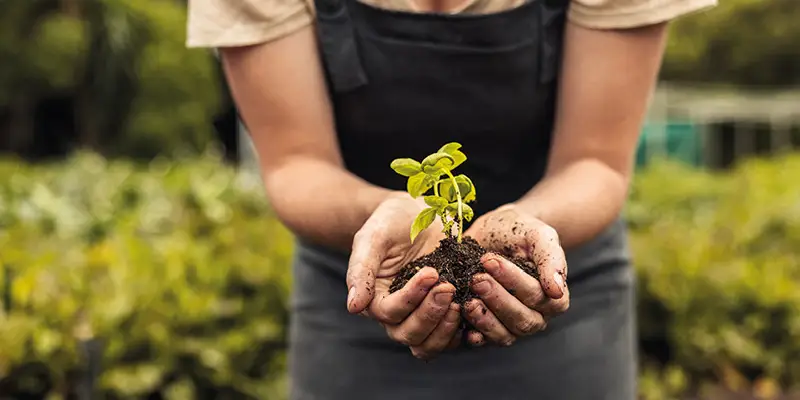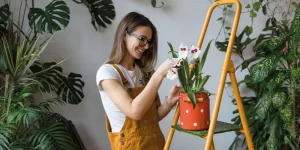Are you looking to lead a sustainable life? Then you need to know some self-sustainability practices that are easy to implement. If you don’t know what this is and the benefits of incorporating it into your life, then keep reading.
What is self-sustainability about and how does it help the environment?
Basically, self-sustainability is a practice in which people use goods or services they develop themselves to satisfy their needs. So, instead of buying products from the store, for example, they generate them by their own means.
Self-sustainability is something that humanity has always done! However, as industrialization has grown, many things you need in your day-to-day life come from other people who probably work in factories. By procuring them on your own, you can contribute to caring for the planet. For example, this lifestyle allows you to:
- Take advantage of renewable resources to use in your favor, which can lead to spending less money.
- Know where everything you consume comes from.
- Reduce your environmental impact since everything you do will be done more cleanly and sustainably.
5 easy, environmentally friendly self-sustainability habits
Here are 5 self-sustainability habits you can implement in your everyday life:
1. Have a garden to grow your own food
If you have your own garden, you can harvest fruits and vegetables using sustainable practices. What is more essential for living if you want to take care of yourself and your family! To have an earth-friendly home, you must use harvesting methods without toxic compounds. In this way, you will be able to:
- Eat healthy food that you grew yourself.
- Preserve the environment by reducing the consumption of other fruits and vegetables that don’t comply with sustainable practices. Also, here’s a tip: If you have a small living space, you can still have a garden. There are many creative ways to grow a garden in a small apartment or balcony.
2. Practice upcycling, another self-sustainability habit
Upcycling consists of giving a second life to objects you were thinking of throwing away. By upcycling, you can avoid waste by repurposing products you already own. Not only will this save you money but also help the planet by extending the useful life of many materials. There are many ways to practice upcycling. For example, you can make your own clothes with leftover fabric or decorations for the home with objects like bottles, among others. Get inspired!
3. Use alternative means of transportation
Self-sustainability can also relate to the way you commute. If you depend on conventional means of transportation, you should know that you will be adding to the overall emissions of contaminating gases. So, the key here is to alternate the use of more sustainable ways of transporting yourself.
For example, ride a bicycle to reach your place of work. You can even walk if you feel comfortable with the distance. These practices will allow you to engage in physical activity while reducing your environmental impact. Perhaps your community provides programs to inspire citizens like you to seek alternative modes of transportation –ride-sharing, e-bike programs, clean-running trains– the sky is the limit!

4. Try to use renewable energy sources
The energy produced in your day-to-day life can begin to come from sustainable sources. There are many: geothermal, hydroelectric, and even wind energy. In this sense, solar panels can also be a great alternative to generate electricity for a home.
Think of it this way: the sun is always there to harness its energy. So, if you install solar panels, your electricity bill will decrease, and you will be taking care of the planet by using renewable and non-polluting energy. We understand this practice may be cost-prohibitive for many, but it never hurts to check out a quote or see if your community has an incentive for installing alternative energy at your home.
5. Schedule the use of household appliances
Did you know that leaving appliances plugged in uses energy around the clock? And that scheduling the use of different appliances can make a big difference for the earth and your utility bill? Using appliances at non-peak hours, leaving them plugged in only when in use, or utilizing smart plugs can be an easy way to allow you to monitor your energy consumption.
Practicing thoughtfulness and mindfulness when using appliances can have a big impact. You can calculate the cost of each appliance, perhaps, or the best hours to use them, by checking out your electricity bill statement, then make smart choices moving forward. For example, if the air conditioning spends too much electricity, you can program it to turn off after a few hours into the night instead of sleeping with it on. We hope that now you have a good idea of what self-sustainability all is about, as well as some helpful tips you can implement in your routine to achieve it. You may have noticed it’s not at all complicated and you can produce great benefits for the planet by implementing it. We invite you to incorporatesustainable habits into your everyday life!
References
- Ecolec. (2021, 18 November). What is self-sustainability?
- Educo. (2019, 28 May). Recycling: activities and crafts for children.
- Fernández Munguía, S. (2021, 11 February). How to install solar self-consumption at home: sizing, cost and profitability. Xataka.
- Galán Feced, C. (2022, 25 July). How to program your appliances to save on the electricity bill. Business Insider.
- Romero, N. (2022, 3 April). Bicycle and the environment: the environment that pollutes the least? Sport.
- Vivanco, A. (2019, 4 September). Everything you need to know to have your own garden according to your location. La Tercera.




